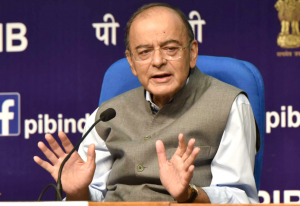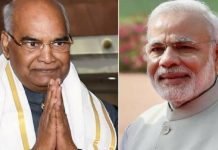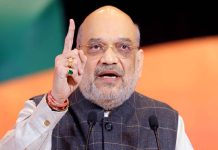
Finance Minister Arun Jaitley posted a strong defence of demonetisation on its second anniversary on Thursday. He said that the note ban had a huge impact in formalising the economy.
“As we complete two years of demonetisation today, it has been established that demonetisation was a key step in a chain of important decisions taken by the government to formalise the economy,” Jaitley said.
He further said, “the Government first targeted the black money outside India. Asset holders were asked to bring this money back on payment of penal tax on failure to do so are being prosecuted under the Black Money Act. All such details received have resulted in action against the violators.”
Jaitley underlined that confiscation of currency was not an objective of demonetisation but getting it into the formal economy and making the holders pay tax was the broader objective.
“An ill-informed criticism of the demonetisation is that almost the entire cash money got deposited in the banks. Confiscation of currency was not an objective of demonetisation. Getting it into the formal economy and making the holders pay tax was the broader objective. The system required to be shaken in order to make India move from cash to digital transactions. This would obviously have an impact on higher tax revenue and a higher tax base,” Jaitley said.
“The impact of demonetisation has been felt on collection of personal income tax. Its collections were higher in Financial Year 2018-19 (till 31-10-2018) compared to the previous year by 20.2%. Even in the corporate tax the collections are 19.5% higher,” he added.
Demonetisation and implementation of the Goods and Service Tax (GST) curbed cash transactions in a big way. With a visible increase in the digital transactions, formalisation of the economy has led to increase in the tax payer base from 6.4 million in the pre-GST regime to 12 million.
Jaitley said, “in May, 2014, when the present Government was elected the total number of the filers of income tax returns was 3.8 crore. In the first four years of this Government, it has increased to 6.86 crore. Despite an annual income tax relief of Rs. 97,000 Crore given to the smaller tax payers and a Rs. 80,000 Crore relief given to the GST assesses, tax collections have gone up. Rates of taxes, both direct and indirect have been reduced, but tax collections have gone up.”
“Government has used these resources for better infrastructure creation, social sector and Rural India. How else could we visualise villages being connected by Road, electricity in every home, 92% coverage for rural sanitation, a successful Awas Yojana, a cooking gas connection. It is the formalisation of the economy which has led to 13 crore entrepreneurs getting Mudra Loans. More formalisation, more revenue, more resources for the poor, better Infrastructure, and a better quality of life for our citizens,” he added.












